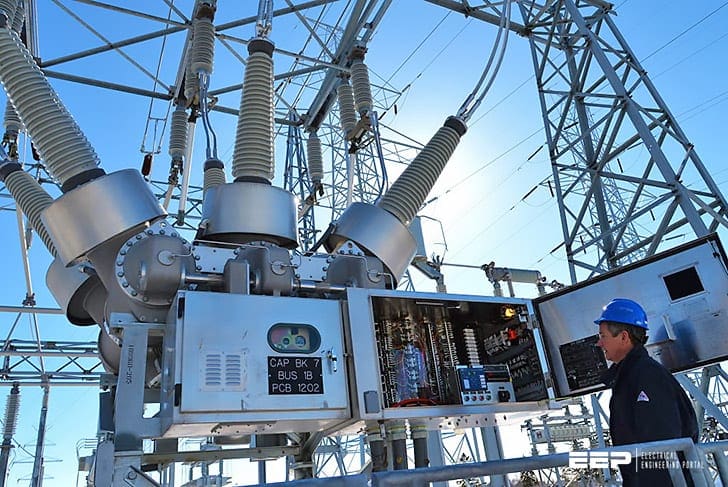T&D technology
This paper summarizes all basic technology you can find in transmission and distribution systems worldwide, starting from overhead lines and underground cables through substation equipment like switchgears, transformers, shunt reactors, HVDC, etc.

Static VAR compensators (SVC)
The SVC is designed to preserve voltage stability by rapidly supplying reactive power to support the voltage during the transient period. It is part of the flexible AC transmission system (FACTS) genre of equipment.
Essentially, SVCs and static compensators (STATCOMs) deliver a similar function using different power electronic technologies and methods SVCs also provide power oscillation damping where instabilities could arise between different parts of a power system.
These are connected to the AC network using a compensator transformer or via the transformer tertiary winding.
Capabilities
An SVC can provide a fast, continuously variable reactive power response using the TCRs, with the coarser reactive control provided by the TSRs and TSCs.
The reactive power MVAr output of the SVC may be controlled directly or be configured to automatically control the voltage by changing its MVAr output accordingly.

As the SVC uses AC components to provide reactive power, the MVAr production reduces in proportion to the square of the voltage. A suitably rated SVC can provide fault ride through capability at the interface point of the offshore transmission network and the onshore transmission system, as required by the System Operator/Transmission Owner Code (STC).
SVCs are made up to 500kV and 720MVAr and they have been in operation for many years at higher ratings and voltages than STATCOMs SVCs tend to be cheaper than STATCOMs on a like-for-like basis, but have a larger footprint.
Dependencies and impacts
The TCRs produce harmonics that normally require fifth and seventh harmonic filters, and star-delta winding transformers to block third and ninth harmonics.
Six-pulse SVCs are typical, but where there’s space and concern about harmonic performance, twelve pulse SVCs can be considered.
If a transformer fails, the SVC will be out of service until the transformer is repaired or replaced The fast dynamic response of the SVC is provided by thyristor valves that are water cooled, air insulated and designed for indoor use.
The reactors and capacitors are usually housed outdoors unless there are noise considerations.
| Title: | Transmission and distribution technology overview – National Grid ESO |
| Format: | |
| Size: | 2.0 MB |
| Pages: | 92 |
| Download: | Right here | Video Courses | Membership | Download Updates |



Ampage n voltage?
Am into power operations and generator
c’est tres instructif mais le niveau est assez élevé pour un simple technicien par contre j’ai bien aimé l’article sur la mise à la terre et la définition de certains termes.Dakar -SENEGAL-WESTERN AFRICA
Resistance of a cable depend on what..